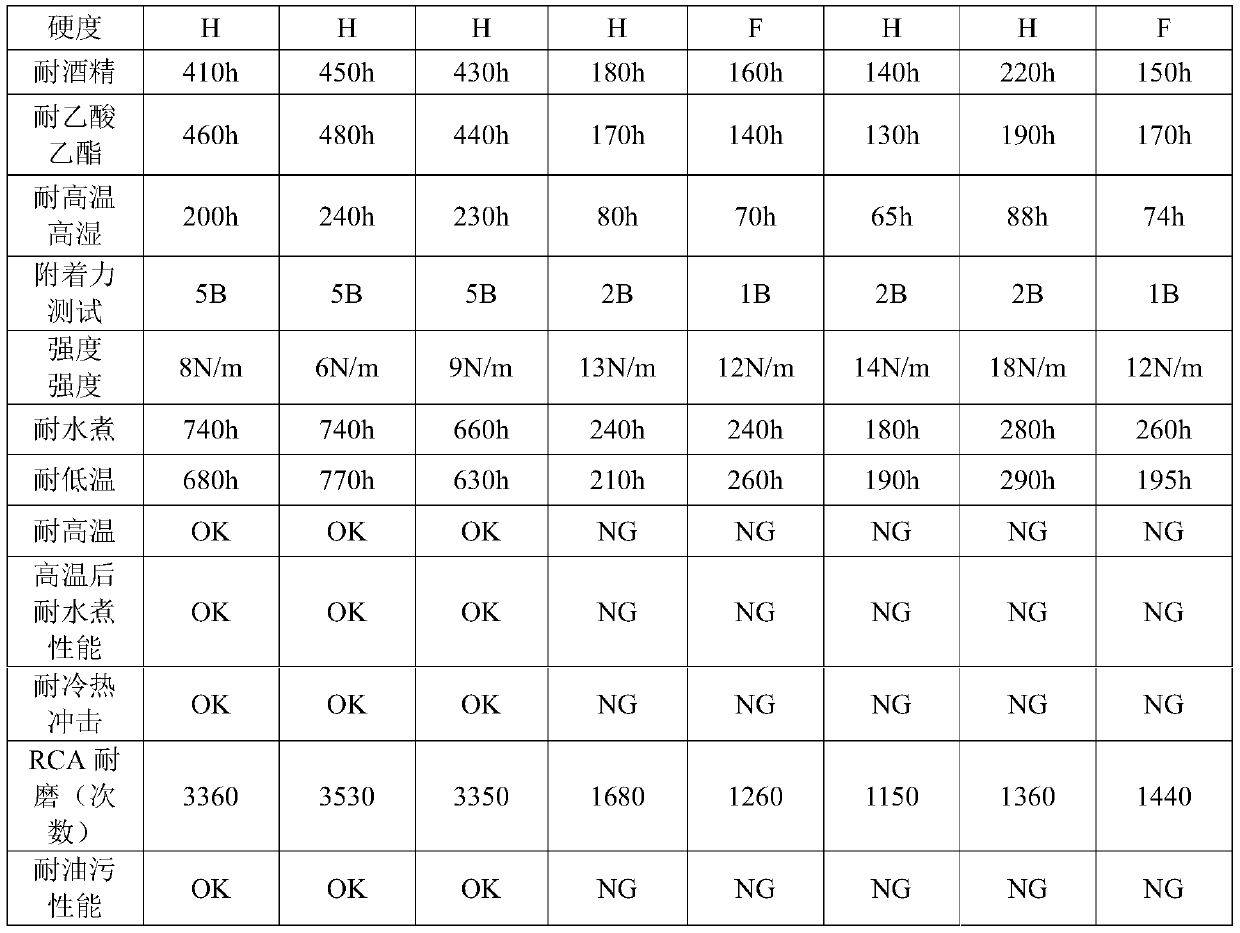Radiation child-mother plate cured colloid and child plate forming method thereof
A molding method, a technology of sub-master, applied in the directions of adhesive, printing plate preparation, epoxy resin glue, etc., can solve the problems of low bonding strength, deviation of quality stability, weakened adhesion, etc., to improve cross-linking Density, good construction performance, the effect of improving adhesion
- Summary
- Abstract
- Description
- Claims
- Application Information
AI Technical Summary
Problems solved by technology
Method used
Image
Examples
Embodiment 1
[0045] The molding method of the radiant master-cured colloidal sub-board includes the following steps:
[0046] (1) Laser engraving the required pattern on a metal roller with high surface finish, so that the surface of the roller is formed with a pattern texture for subsequent transfer to obtain a master; the surface of the metal roller has a metal chromium plating layer with a thickness of 30μm, The surface finish of the metal roller is above level 12, the depth of the pattern texture on the master plate is 5-20μm, and the ratio of the width to the depth of a single microscopic three-dimensional texture is controlled at 2~4:1.
[0047] (2) Coat the radiation master-cured colloid on the release paper to form a transfer adhesive layer with a thickness of 60μm. The transfer adhesive layer is initially dried under negative pressure, and then the heating plate is used on the release paper. The back 0.5mm is baked at 80~90℃ for 1min, and the peeling strength between the release paper ...
Embodiment 2
[0061] Refer to the molding method of the radiation master-cured colloidal sub-board in Example 1; wherein in step (1), the thickness of the metal chromium-plated layer on the surface of the metal roller is 40 μm, and the depth of the pattern texture on the master is 10-25 μm; step ( 2), the thickness of the transfer adhesive layer formed is 80μm, adjust the baking time of the heating plate to control the peeling strength between the release paper and the transfer adhesive layer is 2.5 times the peel strength between the transfer adhesive layer and the master , The pressure on the transfer adhesive layer during the pressing process is 300kPa, and the others are the same as in Example 1.
[0062] The radiation master-curing colloid used includes the following components by weight: 56 parts of polyurethane modified acrylic resin; 42 parts of walnut meal modified melamine urea-formaldehyde resin; 24 parts of bisphenol A epoxy resin; tannic acid as the core 15 parts of arm-type photo...
Embodiment 3
[0073] The molding method of the radiant master-cured colloidal sub-board is the same as that of Example 1.
[0074] The radiation master-curing colloid includes the following components by weight: 60 parts of polyurethane modified acrylic resin; 38 parts of walnut meal modified melamine urea-formaldehyde resin; 28 parts of bisphenol A epoxy resin; multi-arm type with tannic acid as the core 15 parts of photosensitive resin; 16 parts of fluorine-containing acrylic resin; 30 parts of active diluent; 7.8 parts of adhesion promoter; 1.4 parts of silane coupling agent; 1.2 parts of nano particles; 0.48 parts of auxiliary agent.
[0075] The bisphenol A epoxy resin is bisphenol A epoxy resin E44 and bisphenol A epoxy resin E51, and the mass ratio is 2:1.
[0076] Fluorine-containing acrylic resin fluorocarbon acrylate block copolymer and fluorocarbon acrylate multi-arm star-block copolymer, the mass ratio is 1:1.
[0077] The active diluent is trimethylolpropane triacrylate and tripropylen...
PUM
| Property | Measurement | Unit |
|---|---|---|
| Thickness | aaaaa | aaaaa |
| Depth | aaaaa | aaaaa |
| Thickness | aaaaa | aaaaa |
Abstract
Description
Claims
Application Information
 Login to View More
Login to View More - R&D
- Intellectual Property
- Life Sciences
- Materials
- Tech Scout
- Unparalleled Data Quality
- Higher Quality Content
- 60% Fewer Hallucinations
Browse by: Latest US Patents, China's latest patents, Technical Efficacy Thesaurus, Application Domain, Technology Topic, Popular Technical Reports.
© 2025 PatSnap. All rights reserved.Legal|Privacy policy|Modern Slavery Act Transparency Statement|Sitemap|About US| Contact US: help@patsnap.com


